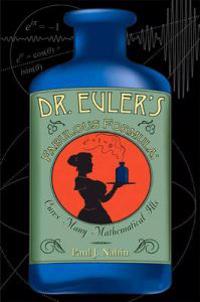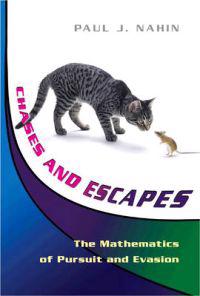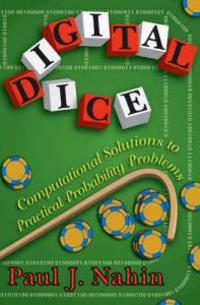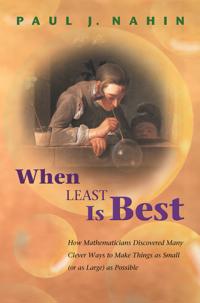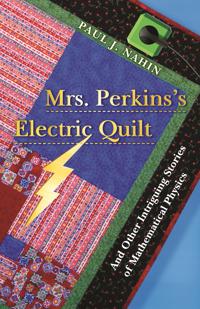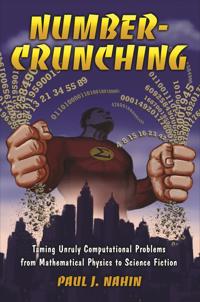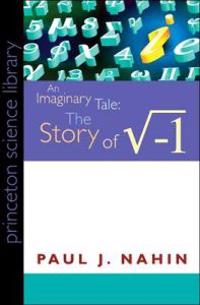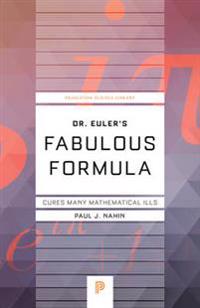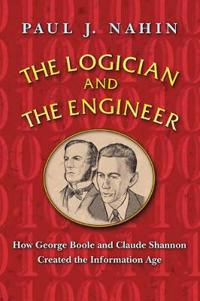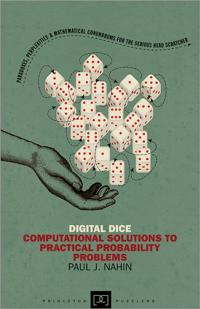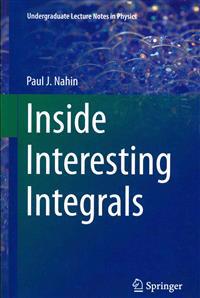Dr. Euler's Fabulous Formula (Inbunden)
avPaul J. Nahin
ISBN: 9780691118222 - UTGIVEN: 200604'I used to think math was no fun 'cause I couldn't see how it was done. Now Euler's my hero. For, I now see why zero equals e[pi] i+1' - Paul Nahin, electrical engineer. In the mid-eighteenth century, Swiss-born mathematician Leonhard Euler developed a formula so innovative and complex that it conti[...]
Chases and Escapes (Inbunden)
avPaul J. Nahin
ISBN: 9780691125145 - UTGIVEN: 200706Traces the development of modern pursuit theory, from its classical analytical beginnings to the present day, and provides challenging puzzles with solutions, anecdotes, and entertaining facts, in a first comprehensive history of a fascinating area of mathematics.[...]
Digital Dice (Inbunden)
avPaul J. Nahin
ISBN: 9780691126982 - UTGIVEN: 2008-03Some probability problems are so difficult that they stump the smartest mathematicians. But even the hardest of these problems can often be solved with a computer and a Monte Carlo simulation, in which a random-number generator simulates a physical process, such as a million rolls of a pair of dice.[...]
When Least is Best (Häftad)
avPaul J. Nahin
ISBN: 9780691130521 - UTGIVEN: 200707What is the best way to photograph a speeding bullet? Why does light move through glass in the least amount of time possible? How can lost hikers find their way out of a forest? What will rainbows look like in the future? Why do soap bubbles have a shape that gives them the least area? By combining [...]
Mrs. Perkins's Electric Quilt (Inbunden)
avPaul J. Nahin
ISBN: 9780691135403 - UTGIVEN: 200908What does quilting have to do with electric circuit theory? The answer is just one of the fascinating ways that best-selling popular math writer Paul Nahin illustrates the deep interplay of math and physics in the world around us in his latest book of challenging mathematical puzzles, "Mrs. Perkins'[...]
Number-Crunching (Inbunden)
avPaul J. Nahin
ISBN: 9780691144252 - UTGIVEN: 2011-08How do technicians repair broken communications cables at the bottom of the ocean without actually seeing them? What's the likelihood of plucking a needle out of a haystack the size of the Earth? And is it possible to use computers to create a universal library of everything ever written or every ph[...]
An Imaginary Tale (Häftad)
avPaul J. Nahin
ISBN: 9780691146003 - UTGIVEN: 201002Today complex numbers have such widespread practical use - from electrical engineering to aeronautics - that few people would expect the story behind their derivation to be filled with adventure and enigma. In "An Imaginary Tale", Paul Nahin tells the 2000-year-old history of one of mathematics' mos[...]
Dr. Euler's Fabulous Formula (Häftad)
avPaul J. Nahin
ISBN: 9780691150376 - UTGIVEN: 201104I used to think math was no fun 'Cause I couldn't see how it was done Now Euler's my hero For I now see why zero Equals e[pi] i+1 - Paul Nahin, electrical engineer. In the mid-eighteenth century, Swiss-born mathematician Leonhard Euler developed a formula so innovative and complex that it continues [...]
The Logician and the Engineer (Inbunden)
avPaul J. Nahin
ISBN: 9780691151007 - UTGIVEN: 201210Boolean algebra, also called Boolean logic, is at the heart of the electronic circuitry in everything we use - from our computers and cars, to our kitchen gadgets and home appliances. How did a system of mathematics established in the Victorian era become the basis for such incredible technological [...]
Duelling Idiots and Other Probability Puzzlers (Pocket)
avPaul J. Nahin
ISBN: 9780691155005 - UTGIVEN: 2012-07-02Will You be Alive 10 Years from Now?: and Numerous Other Curious Questions in Probability (Inbunden)
avPaul J. Nahin
ISBN: 9780691156804 - UTGIVEN: 2013-12-06Digital Dice (Häftad)
avPaul J. Nahin
ISBN: 9780691158211 - UTGIVEN: 201304Some probability problems are so difficult that they stump the smartest mathematicians. But even the hardest of these problems can often be solved with a computer and a Monte Carlo simulation, in which a random-number generator simulates a physical process, such as a million rolls of a pair of dice.[...]
Inside Interesting Integrals (Häftad)
avPaul J. Nahin
ISBN: 9781493912766 - UTGIVEN: 2014-08What's the point of calculating definite integrals since you can't possibly do them all?. What makes doing the specific integrals in this book of value aren't the specific answers we'll obtain, but rather the methods we'll use in obtaining those answers; methods you can use for evaluating the integ[...]

